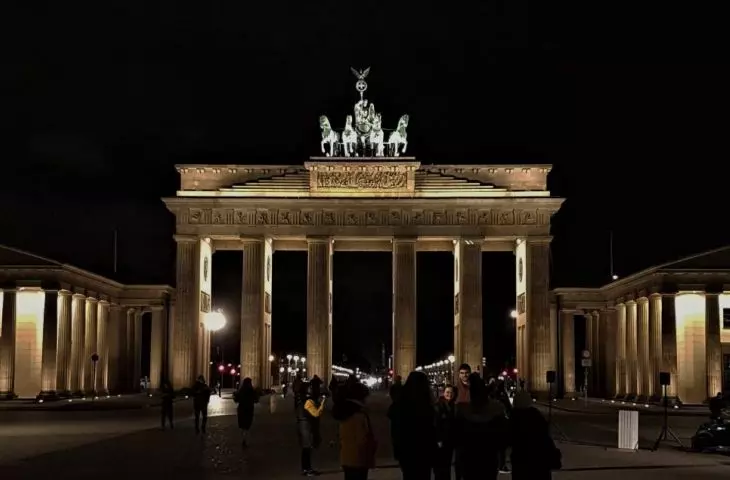Germany is already systemically reducing the lighting of buildings and billboards. In Poland, local governments are thinking seriously about this. So it will be darker, but not necessarily worse. Nature will benefit and we will sleep better. By the way, it's worth checking whether every building illuminated today definitely deserves it.
The growing energy crisis is forcing savings across Europe. With a top-down decree on September 1, Germany introduced restrictions on heating buildings (reducing the temperature to 19 degrees in public buildings, ordering stores to close their doors, etc.) and lighting cities (turning off neon signs and illuminating billboards after 10 pm, abandoning the illumination of buildings - except during holidays). The German government estimates that these measures will bring about a 2.5 percent reduction in gas consumption.
Polish local governments are also trying on their own to restrict lighting. Olsztyn last Friday even made such a decision and turned off the lighting of historic buildings: from the town hall to churches to the former water tower, and since September 18 has also turned off fountains. The olsztyn24.com portal quotes Marcin Szwarc, director of the Olsztyn Board of Roads, Greenery and Transportation:
We have estimated that the savings on illumination on an annual basis at current electricity rates is slightly more than 67 thousand zlotys net.
Next year, in view of the expected surge in energy prices, the savings could be as high as PLN 201 thousand.
darkest under the torch
Similar measures are intended to be taken by cities across the country, which will not only turn off illumination, but also reduce street lighting. This is expected to happen, among others, in Ostrow Wielkopolski, where the majority of streetlights may go out between midnight and 5 am (this example and other cases are enumerated today by Gazeta Wyborcza). However, concrete steps of this kind are not going to be taken for the time being, for example, in Poznań, where slightly more than PLN 22.5 million a year has been budgeted for lighting buildings. By the way, the media reported on doubts about the city's illumination of important but private buildings (reported by Tomasz Dworek, an active councilman of the Stare Miasto district).
Illumination of the cathedral in Ostrów Tumski and the former imperial castle in Poznań
photo: Jakub Głaz
On the other hand, the reduction in lighting is welcomed by naturalists, who for several years have been increasingly calling for a reduction in light pollution in cities. They point out that it has a fatal impact on animal life, with an emphasis on insects, which are killed en masse by artificial lighting. Austerity is an opportunity to meet calls to reduce light intensity in parks and green spaces, and even - to turn off streetlights late at night, where this will in no way affect the level of safety of residents. Activists working for dark night skies can also express moderate joy . After all, light pollution has reached such a scale in Poland that spot and partial reductions are unlikely to improve the situation. In large cities, therefore, there is unlikely to be anything to count on seeing a heavily starry sky.
don't flood!
Less attention, however, has been paid to the potentially beneficial effects on historic monuments and important buildings whose mass and architecture are emphasized by complex lighting systems. It seems that the introduction of austerity would be a good opportunity to consider the validity and scale of these solutions. In recent years, one gets the impression that in many cities there has been overkill. Illumination, after all, should first of all strongly accentuate the most significant monuments or dominants.
Meanwhile, floodlights are directed at an increasing number of buildings, often just to highlight or even advertise the headquarters of an institution, hotel or sports or entertainment facility - despite the lack of architectural merit. Some stadiums, aquaparks or aspiring luxury apartment buildings - of large scale and poor quality - should not even be exposed. So should billboards, large signs, roadside inns, car washes, etc. In the case of offices, on the other hand, it is sufficient to highlight only the entrance or the institution's name - without flooding entire facades with light.
mandatory master plan?
Finally, architecture also deserves a night life. We are slowly weaning ourselves from the dark silhouettes of towers and roofs against the sky, which have been a feature of the urban landscape for centuries. Perhaps - following the example of Germany's cost-saving solutions - some monuments should be illuminated only occasionally, on weekends and holiday periods - especially in winter, when we need much more light.
A partial blackout could therefore be an opportunity for more rational light management. Any doubts should be resolved at the level of detailed lighting masterplans, which are still not common in Polish cities and municipalities - they depend on the goodwill and wisdom of local authorities. Perhaps the obligation to draw up such a master plan - also for reasons of energy savings and importance for nature - should be imposed by law or regulation.




















